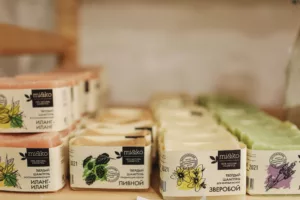Your Natural Beauty Checklist

In a world where beauty products line the shelves with promises of radiance and youthfulness, the quest for genuine and natural skincare and cosmetics has become more important than ever. But with the beauty industry flooded with various labels, it can be challenging to decipher which products truly live up to their “natural” claims. In this beauty blog, we’ll empower you with three valuable tips on how to spot genuine natural products in the market, ensuring that you make informed and eco-conscious choices for your beauty routine.
The Demand for Natural Beauty
The desire for natural beauty products has surged in recent years, driven by consumers who prioritize their health, the environment, and ethical practices. Natural products are perceived as safer, kinder to the skin, and more environmentally friendly. However, not all products labeled as “natural” are created equal, and some may contain hidden synthetic ingredients.
To navigate the natural beauty market effectively, consider the following three tips:
1. Read the Ingredient List Thoroughly
One of the most reliable ways to determine the authenticity of a natural product is by scrutinizing its ingredient list. While many beauty products claim to be natural, a closer look at the ingredients often reveals a different story. Here’s how to decode ingredient lists like a pro:
- Beware of Chemical Names: Look out for ingredients with long, complex names that you can’t pronounce. These are often synthetic chemicals. Genuine natural products should have straightforward, recognizable ingredients.
- Spot Natural Components: Authentic natural products typically feature ingredients derived from nature, such as plant extracts, essential oils, and herbal extracts. Ingredients like aloe vera, chamomile, lavender, and coconut oil are common in natural skincare and cosmetics.
- Check for Certifications: Some natural products bear certifications from organizations like Ecocert, COSMOS, or the USDA Organic Seal. These certifications validate the product’s natural claims and ingredient sourcing.
- Avoid Common Offenders: Be cautious of ingredients like parabens, sulfates, phthalates, and synthetic fragrances. These are often associated with conventional beauty products and may indicate that the product is not entirely natural.
2. Research the Brand’s Values and Ethics
Understanding a brand’s values and ethics can provide valuable insights into the authenticity of their natural products. Here’s what to look for:
- Transparency: Brands that are genuinely committed to natural products are usually transparent about their sourcing and production processes. They share information about where they obtain their ingredients, how products are manufactured, and any third-party certifications they hold.
- Environmental Responsibility: Natural products often align with eco-conscious practices. Brands committed to sustainability prioritize recyclable packaging, reduce their carbon footprint, and implement ethical sourcing of ingredients.
- Cruelty-Free: Look for brands that are cruelty-free, meaning they do not test their products on animals. Cruelty-free certifications, like Leaping Bunny or PETA’s cruelty-free logo, indicate a commitment to ethical practices.
- Customer Reviews: Read reviews and testimonials from customers who have used the products. Genuine natural products tend to garner positive feedback for their efficacy and skin-friendly qualities.
3. Understand the Claims and Labels
The beauty industry is notorious for using buzzwords and marketing tactics to attract consumers. Understanding common claims and labels can help you distinguish genuine natural products from impostors:
- “100% Natural”: Products claiming to be “100% natural” should indeed contain only natural ingredients. Be cautious if the ingredient list includes synthetic components.
- “Organic”: Organic products are made from ingredients grown without synthetic pesticides or herbicides. Look for third-party organic certifications to verify these claims.
- “Hypoallergenic”: While this term suggests that a product is less likely to cause allergies, it does not necessarily mean it’s natural. Check the ingredient list for confirmation.
- “Fragrance-Free”: This label indicates that the product does not contain added synthetic fragrances. However, it may still contain natural scents from its ingredients.
- “Clinically Tested”: Clinical testing does not necessarily guarantee a product’s naturalness. It primarily refers to safety and efficacy testing.
- “Non-Comedogenic”: This term suggests that a product won’t clog pores, but it doesn’t necessarily relate to natural ingredients. Check the ingredient list for confirmation.

As you embark on your journey to incorporate genuine natural products into your beauty routine, remember that knowledge is your greatest ally. By carefully reading ingredient lists, researching brand values, and understanding common claims and labels, you can confidently spot authentic natural products in the market.
Genuine natural beauty products are not just a trend; they represent a commitment to personal health, environmental well-being, and ethical practices. By making informed choices, you not only enhance your beauty but also contribute to a more sustainable and eco-conscious beauty industry. So, the next time you shop for skincare or cosmetics, armed with these tips, you’ll be better equipped to choose products that align with your values and aspirations for natural beauty.

